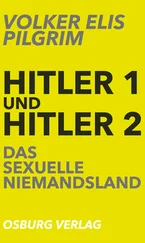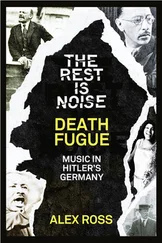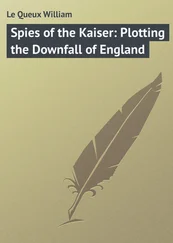For all these reasons, their members repeatedly expressed the need for an “elite,” which the Goerdeler group thought could be created by a stern government based on traditional values and which the Kreisau group believed would emerge from a return to “personal substance” based on Christian or socialist values. There were even similarities in their recipes for the new society. The Kreisauers, too, imagined a society constructed from the bottom up, beginning with simple units of local self-administration. They also had a deep distrust of professional politicians and aimed to replace them with individuals who had proved themselves in practical life and had strong local or regional roots.The greatest contrast between the two groups was in the field of economics, although even here the Kreisau group’s dislike for Goerdeler’s liberalism only brought them into line with Popitz and Jessen, who favored a highly interventionist economy in keeping with their authoritarian, state-driven view of society. Even corporatist ideas found eloquent advocates in the Kreisau group, especially among its Catholic members.
The Kreisauers suffered many internal differences of opinion over such issues as the nationalization of heavy industry, the division of landed estates, and the role of parochial schools. The question of redrawing the regional map of the Reich led to such bitter controversies that some of the inveterate Bavarians even left the group. Historical perspective tends to make many of the internal and external conflicts of these groups seem less serious than they in fact were. Goerdeler’s dismissal of the Kreisauers as “armchair Bolsheviks,” for example, reveals as great a misunderstanding of their basic intentions as Moltke’s and Trott’s remarks about reactionary “notables” do of Goerdeler’s circle, however accurate these characterizations may have been in individual cases.
Another difference was far more telling. While the group around Heck and Goerdeler was committed to some form of coup d’ état, violent if necessary, most members of the Kreisau Circle rejected any sort of violence. This stance largely reflected their religious convictions, of course. Almost equally strong was their belief that “demonic forces” were at work in Hitler, which neither could nor should be simply swept aside.” 23All attempts to do so were, in their eyes, merely efforts to overcome the great crisis in world history through the same arbitrary and violent means that helped cause it in the first place. Instead, the demonic forces had to be allowed to burn out. This conviction led many within the circle to reject not only an assassination attempt but even the notion of a coup, for, as Moltke wrote lo his friend Lionel Curtis, “we need a real revolution, not just a putsch.” Only a complete collapse and widespread acceptance of the inevitability of defeat and the ensuing chaos could create the necessary preconditions for the great internal revival on which the future depended. Among the Kreisauers, Eugen Gerstenmaier most vehemently attacked this belief and what he termed its un-Christian fatalism. But Moltke championed it energetically nevertheless, carrying most of the circle with him. The fervor with which he denied the possibility of a shift in Germany’s ebbing military fortunes and forecast total destruction (with far more realism than his friends) indicated that he took a certain satisfaction in the approaching inferno, which alone could give rise to a radically new beginning. “My own homeland of Silesia will go to the Czechs or the Poles,” he wrote before the battle of Stalingrad to his old friend George F. Kennan. 24
The foreign policy ideas of these two groups also differed greatly. Beck and Goerdeler’s circle still thought in terms of hegemonic power and regarded it as a matter of course that Germany would continue to play a major role in Europe. The Kreisauers adopted a more radical, Utopian stance on this issue as well, their ideas focusing to varying degrees on a new brand of international relations that would do away with the “borders and soldiers” of the past. In the new age that they saw dawning, selfish nationalisms would yield to a pan-European unity. The germ of this idea came from Moltke and the socialist members of the circle-Haubach, Reichwein, and Mierendorff-but it was swiftly embraced by all the others. Even before the outbreak of the war, the only belief that all the members of the Kreisau Circle shared was this emphasis on the larger picture, on what Europeans had in common, the intellectual foundations of their history, traditions, and way of life, a shared desire to see neighbors no longer as foes but as family, as people who were similar to one another and yet different in interesting ways. Only in this manner, they thought, could there be a reconciliation of the nations in Europe that considered themselves hereditary enemies, and only in this manner could the problem of minorities finally be solved, an issue that seemed always to end in bloodletting, especially in the central and eastern parts of the continent.
There was much less unanimity among the Kreisauers on the consequences of their program. To be sure, they agreed that the old idea of dominant powers in Europe should be abandoned, that there should be no more territorial claims escalating into life-and-death issues, that a new understanding of national interest, the state, and national sovereignty must emerge. Once again Moltke proved to be the most radical member of the circle, advocating nothing less than the elimination of the nation-state and the reorganization of Europe into a multiplicity of regions that were historically and culturally related. In this he was returning to the idea of small self-governing units and applying it to Europe as a whole. These autonomous regions would exercise only limited powers, with the traditional jurisdiction of sovereign states transferred to a single European entity.
Most of Moltke’s associates did not share his radical vision of a federated Europe. Adam von Trott, the circle’s “foreign minister,” saw the national characters that the European countries had developed in the course of history as a feature of the old continent that merited preservation. For much the same reason, he opposed the idea of simply squeezing Germany into a “Western” constitutional tradition, despite his high hopes for what Anglo-German cooperation could achieve. He shared, though, the conviction of almost all the members of the circle that the age of the nation-state had passed and that some measure of sovereignty would have to be surrendered to a Federal European state if the survival of the various nations of Europe was to be ensured.
These ideas were obviously not fully thought out, but they pointed the way to the future. They attracted support for their own sake, not only because they were categorically opposed to Hitler’s approach of conquest and subjugation but also because their vision of the future stood in stark opposition to the nationalistic fervor of the times. This vision, like all the other plans and designs of the German resistance, eventually faded from memory, and during the actual process of European unification after the war it was not even mentioned. For this very reason, however, it deserves to be recalled now.
* * *
It is hardly surprising that the “notables” around Goerdeler viewed the pan-European ideas of the Kreisau Circle as little more than idealistic or eccentric fantasies. They had grown up at time when Germany was rising into the ranks of the great powers of the world and to them concepts as nation-states, great-power status, zones of influence, and national interest were like the laws of physics-they could not simply be abolished. Virtually all the members of the Goerdeler group thought that at least the “greater German territories” should remain within the Reich. This has given rise to accusations that there were strong underlying similarities with the regime-or even that the national-conservative opposition was simply striving to realize Hitler’s aims without Hitler.
Читать дальше
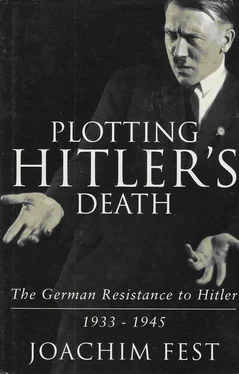
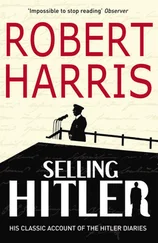
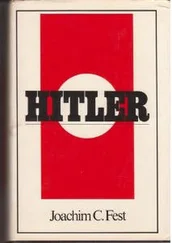
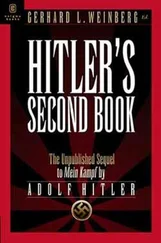
![Traudl Junge - Hitler's Last Secretary - A Firsthand Account of Life with Hitler [aka Until the Final Hour]](/books/416681/traudl-junge-hitler-s-last-secretary-a-firsthand-thumb.webp)

